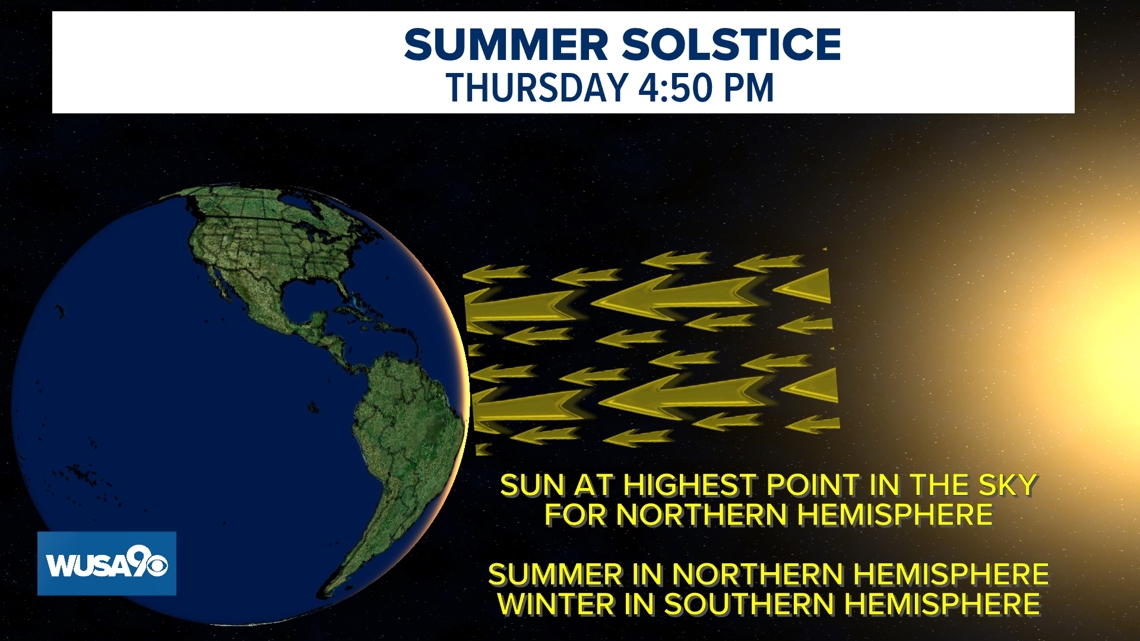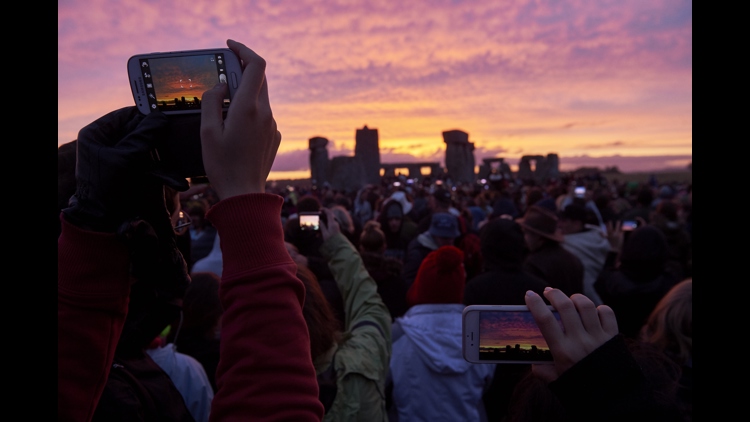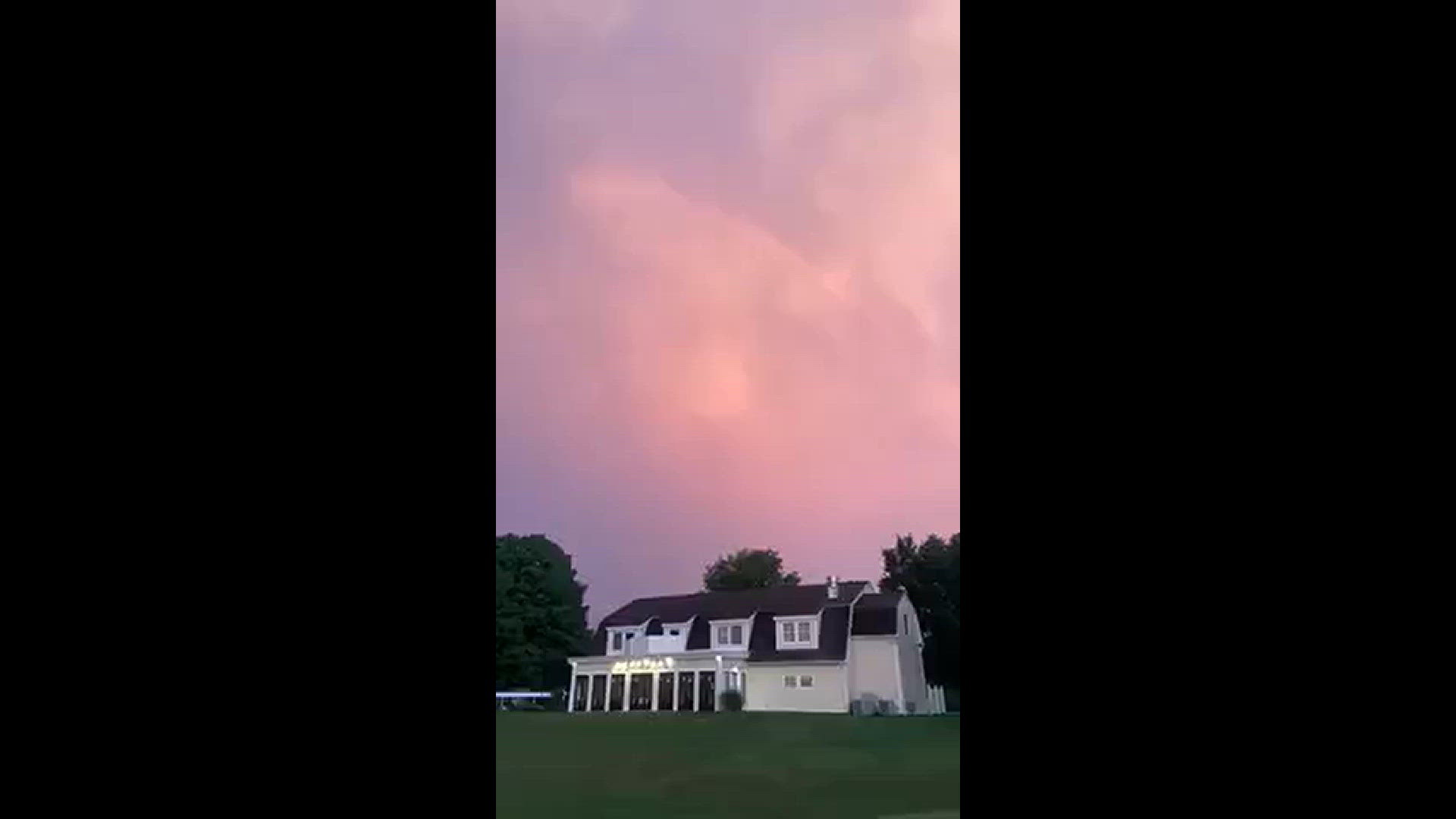WASHINGTON — Astronomical summer officially arrives Thursday afternoon at 4:50 p.m. with the summer solstice.
Summer solstice means "sun standstill." This is when the earth tilts on its axis changing the angel of the sun overhead creating an apparent migration of the sun northward in spring and summer.
At the beginning of spring, the sun is directly over the equator resulting in equal day and night for both hemispheres.
The summer solstice marks the farthest northerly point the sun reaches before moving southward until the winter solstice.
Climate is all about the angle of the sun. Yes, the days get longer in spring and summer and yes, the jet stream retreats north but the angle of the sun is what drives the climate changes. As we go into summer in the northern hemisphere, the southern hemisphere marks the beginning of winter.


Is Sunday or Monday the longest day of the year? It's a bit more complicated than that. On the 16th of June, the sunrise is 5:42 a.m. and the sunset is 8:36 p.m. That gives us 13 hours and 54 minutes of sunlight.
The same sunrise and sunset continues on the 17th but then the sunrise changes on the 18th to 5:43 a.m., reducing the sunlight to 13 hours and 53 minutes.
On the 19th through the 22nd, the sun sets one minute later (8:37 p.m.), giving us 13 hours and 54 minutes of sunlight again. Technically, to the second Thursday will be the longest day of the year with 14 hours, fifty three minutes and fifty two seconds of sunlight. We lose one second of sunlight on the 22nd.
On the 21st, our days begin to grow shorter. The good news is that the late sunset (8:37 p.m.) continues from the 19th through July 5th.



